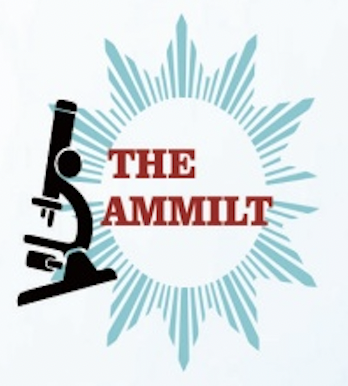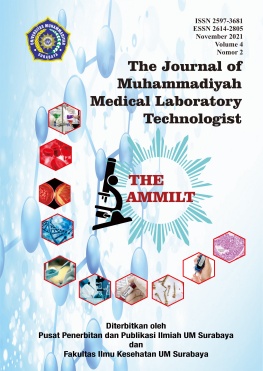Isi Artikel Utama
Abstrak
Diabetes mellitus is a degenerative disease caused by the damage of beta pancreatic cells. This caused many complication such as diabetic ulcer which left untreated can cause an open wound hard to heal thereby reducing the quality of life. Treatment of diabetic ulcer despite using antidiabetic also using an antibiotic therapy like Mupirocin. In its development, the use of natural ingredients is known to be used as adjuvant therapy for diabetic ulcer such as Ciplukan leaves and Kayu Manis bark. Both of the plant contain phytochemical compound like sinamaldehid, tannin, polyphenol and flavonoid which can work as wound healer. To increase its efficacy then Ciplukan leaves and Kayu Manis bark were formulated as hydrogel patch. Hydrogel patch are known has advantages like better penetration, hygienic and easy to administered Ciplukan (Physalis angulata L.) leaves and Kayu Manis (Cinnamomum burmannii) Bark extracted with maceration technique. The extracts then made into matrix type hydrogel patch with 10% HPMC and 5% PVA as backing patch. The backing patch and extract then placed on a square cast and dried under room temperature for 24 hours. The hydrogel patch then evaluated for physical characteristic including organoleptic aspect, weight uniformity, moisture content and pH. The results showed that Ciplukan leaves and Kayu Manis Bark hydrogel patch have a semi solid consistency, transparent greenish color and distinctive smell. The average pH is 5,5 and have average weight around 1,18 grams. The moisture contens of hydrogel patch is 2,42%. The Ciplukan leaves and Kayu Manis bark is able to formulated into hydrogel patch. The hydrogel patch is showing good appearance and having good properties as topical dosage form. The pH of the hydrogel patch is suitable with pH of the skin and have no intention to irritate the skin. Hydrogel patch also giving a cooling sensations in wound area thus increase patients convenience and acceptability.Â
Â
Keywords:Â Diabetes mellitus, extract, drug delivery system, hydrogel patch, adjuvant therapy
Rincian Artikel
Referensi
- Ansari K, Singhai AK, S. G. (2011). Recent advancement in transdermal drug delivery system. Indian J Pharm Sci. Vol 3, Sup.
- Baghaie, S., Khorasani, M. T. and Zarrabi, A. (2017) ‘Wound Healing Properties of PVA/Starch/Chitosan Hydrogel Membranes with Nano Zinc Oxide as Antibacterial Wound Dressing Material’, Journal of Biomaterials Science, Polymer Edition. Taylor & Francis, 5063, pp. 3–41.
- Boateng, J. S. et al. (2008) ‘Wound Healing Dressings and Drug Delivery Systems: A Review’, Journal of Pharmaceutical Sciences. Elsevier Masson SAS, 97(8), pp. 2892–2923.
- Dhiman S, Singh TG, R. A. (2011). Transdermal patches- a recent approch to new drug delivery system. Indian J Pharm Sci, Vol 3, Sup.
- Godbey KJ. (1996). Improving patient comfort with nonocclusive transdermal backings, American Association of Pharmaceutical Scientists. 1996; 1-2.
- McNeely MJ, Boyko EJ, Ahroni JH, S. V., & Reiber GE, Smith DG, et al. (1995). The independent contributions of diabetic neuropathy and vasculopathy in foot ulceration. How great are the risks? Diabetes Care 1995;18:216-9.
- Nirav S Sheth, R. B. M. (2011). Formulation and evaluation of transdermal patches and to study permeation enhancement effect of eugenol. Journal of Applied Pharmaceutical Science 01, 96–101.
- Rakesh P., G. P. A. A. B. (2015). Rakesh P., Grishma Patch And Ashok Barian. (2015). Formulation And Evaluation Of Transdermal Patch Of Aceclofenac. International Journal Of Drug Delivery, Vol. 2 No.
- Reiber, G. E., Boyko, E. J., & Smith, D. G. (1995). Lower extremity foot ulcers and amputations in diabetes. In: National Diabetes Data Group (U.S.). Diabetes in America. 2nd ed. Bethesda, Md.: National Institutes of Health. National Institute of Diabetes and Digestive and Kidney Diseases., 95(1468).
- Rowe, Raymond C., Paul Sheskey and Sian C Owen. (2006). Handbook of Pharmaceutical Excipient Fifth Edition. USA: Pharmaceutical Press
- RW, B. (1983). Advances in drug delivery systems. Bombay: MSR Foundation, pp 136–147.
- Vishwakarma, Amit K. et al. (2012) ‘Formulation and Evaluation of Transdermal Patch Containing Turmeric Oil’, International Journal of Pharmacy and Pharmaceutical Science, pp. 358-361
Referensi
Ansari K, Singhai AK, S. G. (2011). Recent advancement in transdermal drug delivery system. Indian J Pharm Sci. Vol 3, Sup.
Baghaie, S., Khorasani, M. T. and Zarrabi, A. (2017) ‘Wound Healing Properties of PVA/Starch/Chitosan Hydrogel Membranes with Nano Zinc Oxide as Antibacterial Wound Dressing Material’, Journal of Biomaterials Science, Polymer Edition. Taylor & Francis, 5063, pp. 3–41.
Boateng, J. S. et al. (2008) ‘Wound Healing Dressings and Drug Delivery Systems: A Review’, Journal of Pharmaceutical Sciences. Elsevier Masson SAS, 97(8), pp. 2892–2923.
Dhiman S, Singh TG, R. A. (2011). Transdermal patches- a recent approch to new drug delivery system. Indian J Pharm Sci, Vol 3, Sup.
Godbey KJ. (1996). Improving patient comfort with nonocclusive transdermal backings, American Association of Pharmaceutical Scientists. 1996; 1-2.
McNeely MJ, Boyko EJ, Ahroni JH, S. V., & Reiber GE, Smith DG, et al. (1995). The independent contributions of diabetic neuropathy and vasculopathy in foot ulceration. How great are the risks? Diabetes Care 1995;18:216-9.
Nirav S Sheth, R. B. M. (2011). Formulation and evaluation of transdermal patches and to study permeation enhancement effect of eugenol. Journal of Applied Pharmaceutical Science 01, 96–101.
Rakesh P., G. P. A. A. B. (2015). Rakesh P., Grishma Patch And Ashok Barian. (2015). Formulation And Evaluation Of Transdermal Patch Of Aceclofenac. International Journal Of Drug Delivery, Vol. 2 No.
Reiber, G. E., Boyko, E. J., & Smith, D. G. (1995). Lower extremity foot ulcers and amputations in diabetes. In: National Diabetes Data Group (U.S.). Diabetes in America. 2nd ed. Bethesda, Md.: National Institutes of Health. National Institute of Diabetes and Digestive and Kidney Diseases., 95(1468).
Rowe, Raymond C., Paul Sheskey and Sian C Owen. (2006). Handbook of Pharmaceutical Excipient Fifth Edition. USA: Pharmaceutical Press
RW, B. (1983). Advances in drug delivery systems. Bombay: MSR Foundation, pp 136–147.
Vishwakarma, Amit K. et al. (2012) ‘Formulation and Evaluation of Transdermal Patch Containing Turmeric Oil’, International Journal of Pharmacy and Pharmaceutical Science, pp. 358-361

